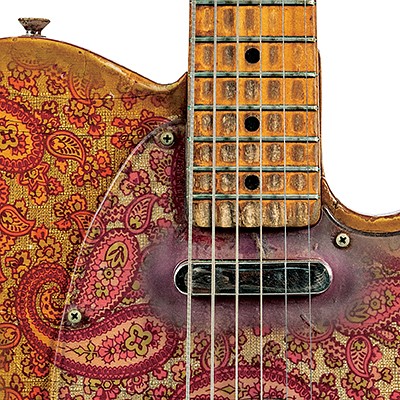Three American Violin Cases, Maulbetsch & Whittemore, c. 1910
Lot 1294
About Seller
Bonhams Skinner
274 Cedar Hill Street
Marlborough, MA 01752
United States
Founded over four decades ago, Bonhams Skinner offers more than 60 auctions annually. Bonhams Skinner auctions reach an international audience and showcase the unique, rare, and beautiful in dozens of categories, including the fine and decorative arts, jewelry, modern design, musical instruments, sc...Read more
Categories
About Auction
Catalog Only
By Bonhams Skinner
Jun 7, 2021 - Jun 17, 2021
Set Reminder
2021-06-07 12:00:00
2021-06-17 19:00:00
America/New_York
Bidsquare
Bidsquare : Fine Musical Instruments
https://www.bidsquare.com/auctions/skinner/fine-musical-instruments-7042
Our June Fine Musical Instruments auction of nearly 400 lots caters to the discerning player and collector alike. Bonhams Skinner bidsquare@bonhamsskinner.com
Our June Fine Musical Instruments auction of nearly 400 lots caters to the discerning player and collector alike. Bonhams Skinner bidsquare@bonhamsskinner.com
- Lot Description
Three American Violin Cases, Maulbetsch & Whittemore, c. 1910, stamped with a bull's head device, the brown tooled leather No. 51 side load holster, the black tooled leather No. 52 end load holster, and the black molded case; ht. 5 1/2, wd. 31, dp. 10 1/4 in.
Provenance: The collection of Dr. Glenn P. Wood.
Literature: "Development of Handmade Violin Cases in America during the 19th Century," Journal of the Violin Society of America Papers, Vol. XXIV, No. 2, 2014; The Art & History of Violin Cases, 2008, pp. 91-93, illustrated.
Note: "This is possibly one of the more influential American case designs of all time.
Until the end of the 19th century, the design of violin cases always incorporated one or more straight lines and the manufacturing of cases was somewhat complicated. In a single invention, M&W freed up the design so that all edges and surfaces could be curved and they patented a radical new production process whereby the case was made from synthetic materials shaped in a mold. This design freedom caused a sensation when it was exported to Europe and became known in France as the 'Etui Forme Americaine.'
Producers in France and Germany scrambled to mimic the appearance of these 'New Century' cases but were fearful of the US patent. In Germany, a case of similar design was carved from solid wood to avoid litigation over the thermoforming process. In France, Thibouville and Laberte did the best they could using steam presses and wood to try and simulate the American form fitting cases." --G.P.W.Condition
Any condition statement is given as a courtesy to a client, is only an opinion and should not be treated as a statement of fact. Skinner Inc. shall have no responsibility for any error or omission. The absence of a condition statement does not imply that the lot is in perfect condition or completely free from wear and tear, imperfections or the effects of aging. - Shipping Info
-
Please visit http://www.skinnerinc.com/services/payment-and-shipping/ for information regarding the collection of items purchased at auction.
-
- Buyer's Premium



 EUR
EUR CAD
CAD AUD
AUD GBP
GBP MXN
MXN HKD
HKD CNY
CNY MYR
MYR SEK
SEK SGD
SGD CHF
CHF THB
THB















